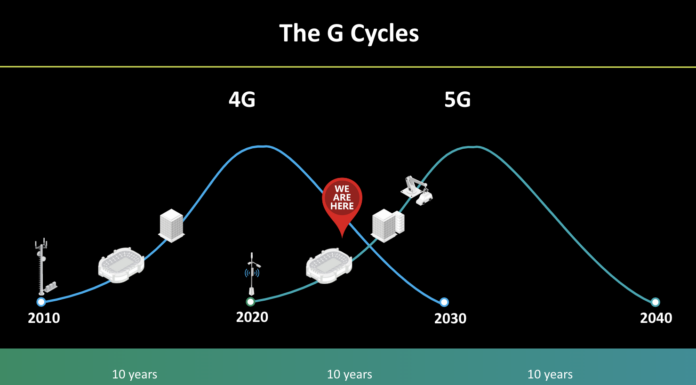CommScope sees market opportunity, TCO, ecosystem support and convergence all making the case for in-building Open RAN
Reflecting on the typical 10-year cellular generation cycle, as well as the roughly 20-year lifecycle of a G, CommScope’s Luigi Tarlazzi, vice president of engineering, pointed out that attention is historically turned to in-building investment at roughly the mid-point of the decade. So 4G was launched in 2010 and in-building investment ramped around 2015. If you count the start of 5G as around 2020, that means the in-building step is upon us.
“This is happening now,” he told attendees to the Open RAN Global Forum, available on-demand here. “We’ve started to see a huge uptick in 5G deployments for large public venues,” including stadiums, airports and the like. But what does that mean for Open RAN which has similarly increased in interest along with the build out of 5G?
Tarlazzi said investment in Open RAN “will continue, and we’ll see more and more wide adoption of this new way of building cellular networks.” That includes, he said, multi-carrier in-building cellular systems and private cellular networks. He pointed out challenges carriers are navigating around implementing Open RAN in brownfield networks; “in-building cellular, actually…is a little bit kind of lower-hanging fruit in terms of risk that an [mobile network operator] would take to deploy a new technology in this environment.” Essentially, in-building cellular networks and private networks are inherently greenfield and isolated from the macro network.
“When there is no coverage, you bring new coverage,” he said. “It’s basically a greenfield scenario…Indoor is probably, from a timeline standpoint, where we see—potentially see—the fastest adoption.” In addition to the macro opportunity, Tarlazzi highlighted TCO benefits given reduction in on-prem footprint and reduced energy consumption as compared to a traditional distributed antenna system (DAS).
And from an enterprise perspective, Tarlazzi said Open RAN is more user-friendly because it’s more IT-like than integrated cellular. “There is an opportunity, we believe, to allow the enterprise maybe to actually source some of the hardware that is needed, then bring in the carriers, their software and RAN workloads, to actually operate the network.”
To the ecosystem point, he said there’s an established pool of in-building specialists, including system integrators, neutral host providers and managed service providers. “There is already a proven ecosystem supporting what can come from the carriers…and then can be integrated into what is deployed on prem…The indoor ecosystem is ready…to take ownership of these solutions.”
Tarlazzi then talked about convergence—convergence of public and private cellular on a shared infrastructure, convergence of licensed and unlicensed spectrum, and convergence of multiple software elements for different use cases on a unified hardware platform. “We believe that even more looking forward, looking at how the quickly the network and the technologies are evolving…there is the need to have a network in a venue or an enterprise that can actually scale up and be upgraded seamlessly via software.”

